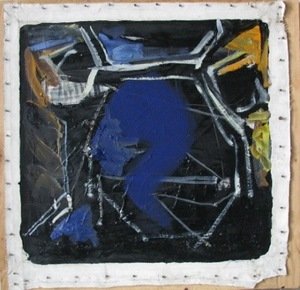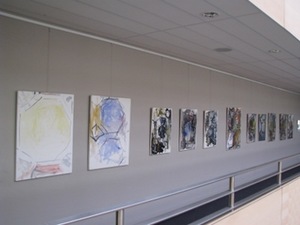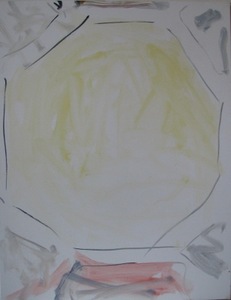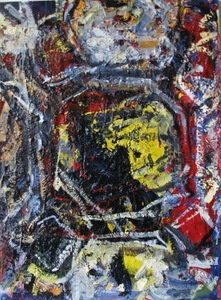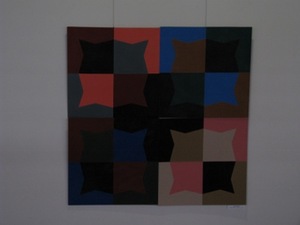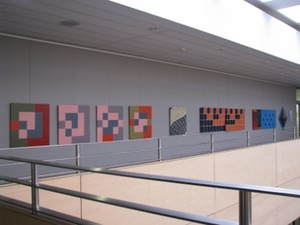Seeing differently 0
In brief: The painting exhibition from the cycle ”Duets” of the sister and brother Aušra Andziulytė and Antanas Andziulis is open at Kaunas Aukso Pjūvis gallery until November 18.
Paintings of Aušra Andziulytė are well known in Lithuania and abroad; therefore, she does not need any thorough presentation. She creates works of concentration and freedom, synthesis of silence and sound; the author succeeds to “take” the external meanings from the painted view but also to express some important notes and to deepen into the realisation and seeing of the view.
Looking at twelve canvases displayed by Aušra in the exhibition (these are works selected form the cycle of 24 works ”Light of Pažaislis”, 2013) and thinking about old floors seen by the painter in the sacred space in Pažaislis, one may ask perhaps the artist should have searched for more valuable objects for paintings?
Still, going from one painting to another and seeing how colours and forms change, some of them disappear and others appear, one can say that the floors painted by the artist is the most precise detail that give sense to the place. Now every visitor of the exhibition can feel on what we walk in Pažaislis and what air we breath in this space.
In the exhibition Antanas Andziulis presents six geometrical abstract paintings. The majority of them are areas of special colours that make squares. Gaps appear among works; still, the viewer wishes to look at them as to one huge square or one horizontal line.
The geometrical form is most probably important to the painter as much as the chosen colour. While the form of the square or rhombus is purely from the personal experience of the author, the code of frequent repetition in life, the chosen colours are taken from the general collective memory of the science of colours.
The author is interested in the touch of one colour and another, their junction and tension at the meeting point. One more important thought of the author is that “the game and code” is captured in the square. He states in this way that his works may be read clearly when one knows the code, or one may read them as sketches or unexpected combinations if one does not know the code.”








